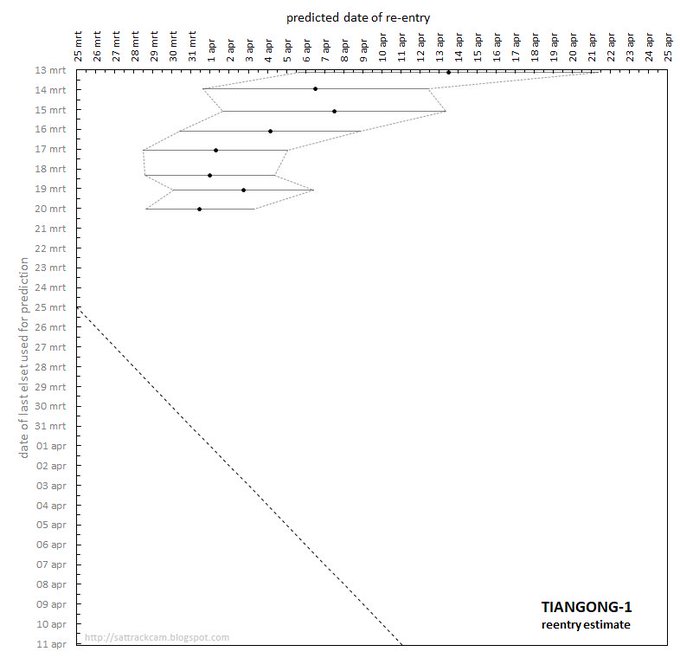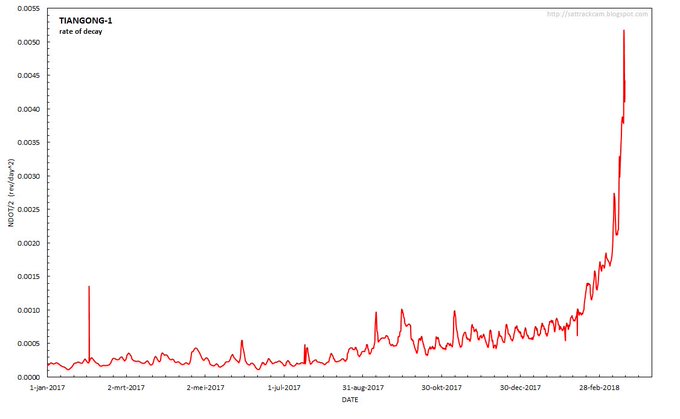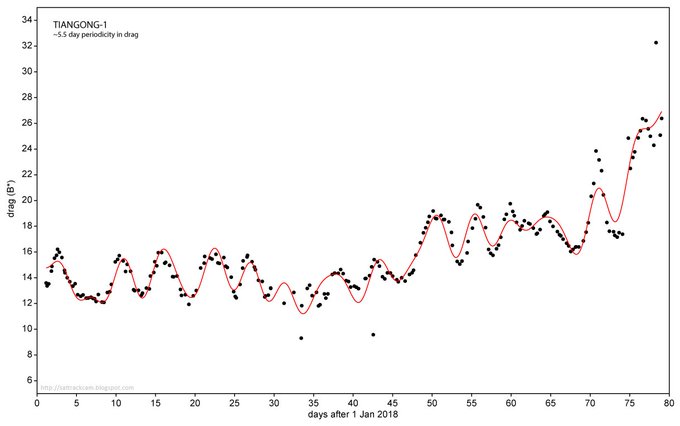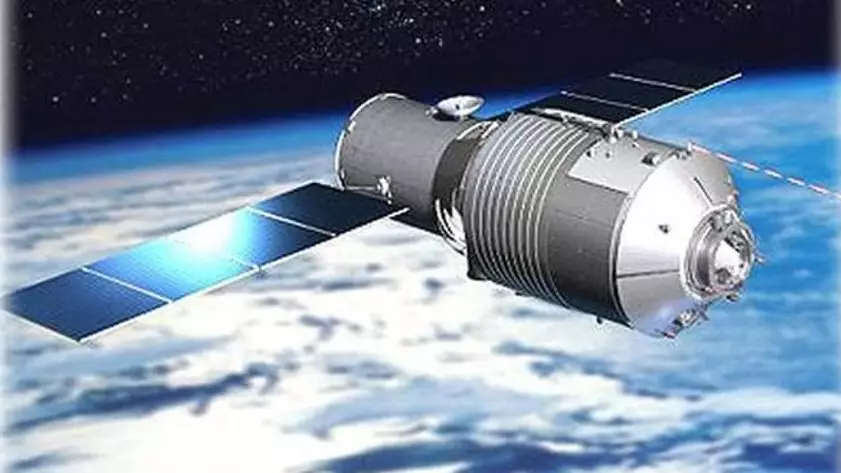
An out of control Chinese space station carrying some pretty toxic chemicals could be about to return to Earth with a bang at some point in the very near future, according to research.
Tiangong-1 was China's first ever space lab but it has been out of service for a long time now and is basically hurtling around the earth at high speed with very little purpose.
It weighs about 8.5 tonnes and is thought to contain quite a bit of hydrazine - which is basically rocket fuel.
Advert
A lot of it will burn up in the atmosphere at re-entry, but not all of it. Some of the craft will fall to earth at great speed as space debris. The problem is we aren't exactly sure when or where it will fall.
The European Space Agency (ESA) suggested earlier in the month that they could predict the event would happen between 24 March and 19 April, which is not all too helpful.
However, satellite trackers doing some pretty complex looking maths have suggested that they can pin down the date of the event to a slightly smaller time-frame.
Satellite tracker Dr Marco Langbroek reckons that it will be within three days of 31 March.
That estimate puts him pretty much in line with the latest from the ESA's most up-to-date forecast - which is between 30 March and 6 April.
Advert
This is only half the battle though. It's all well and good being able to pin down (sort of) when a huge chunk of flaming metal and corrosive chemicals will fall from the skies, but what you really need to know is WHERE the aforementioned chunk is going to create a crater.
Again, that's based upon quite a bit of guesswork, as well as no small amount of complicated maths.
Disappointingly, given the maths they've used to create this answer, it's pretty vague again.
Handily, they've provided a map, and - as you can see - it basically includes everywhere outside of the northernmost and southernmost parts of the world.
Advert
If you're sitting in that bottom tip of Argentina you can feel pretty smug right about now.
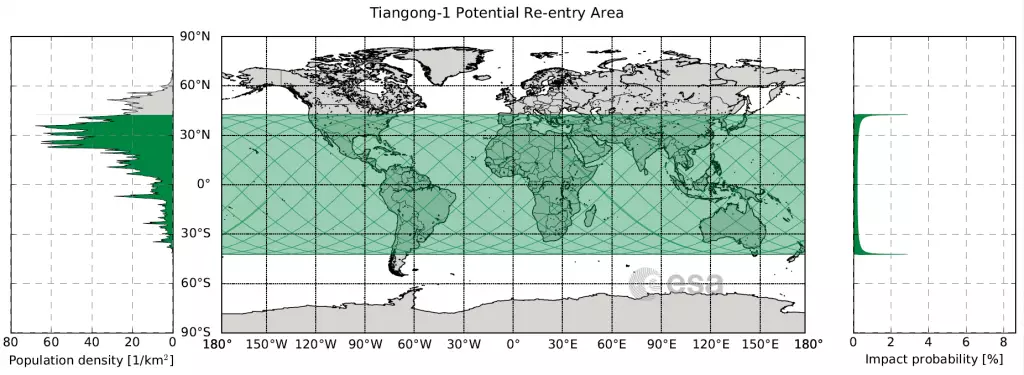
In official terms, everywhere between the latitudes of 43 degrees north and 43 degrees south is in play.
However, if you fall into that vast area, there isn't a great deal to be concerned about.
Advert
Aerospace, an organisation that researches both private and state-run space travel, told the Guardian: "When considering the worst-case location ... the probability that a specific person (i.e., you) will be struck by Tiangong-1 debris is about one million times smaller than the odds of winning the Powerball jackpot.
"In the history of spaceflight no known person has ever been harmed by re-entering space debris. Only one person has ever been recorded as being hit by a piece of space debris and, fortunately, she was not injured."
So if you do get hit by a falling satellite in the next few weeks, you are not only going to be most likely killed, but also the unluckiest person in the history of everything.
Featured Image Credit: Chinese Manned Space AgencyTopics: World News, News, Technology, China
